The start of our vins clairs (clear wines) tasting is at Perrier-Jouët (pronounced ‘Jouëtte’, I am told) in the Avenue de Champagne in Epernay, which has a 210 year-history of producing prestigious, elegant champagne. Perrier-Jouët’s cellar master, Séverine Frerson, took over in 2020 and is the first woman to hold the position. Chardonnay is their backbone bringing a signature style which is floral, delicate, and intricate with a refinement of texture.
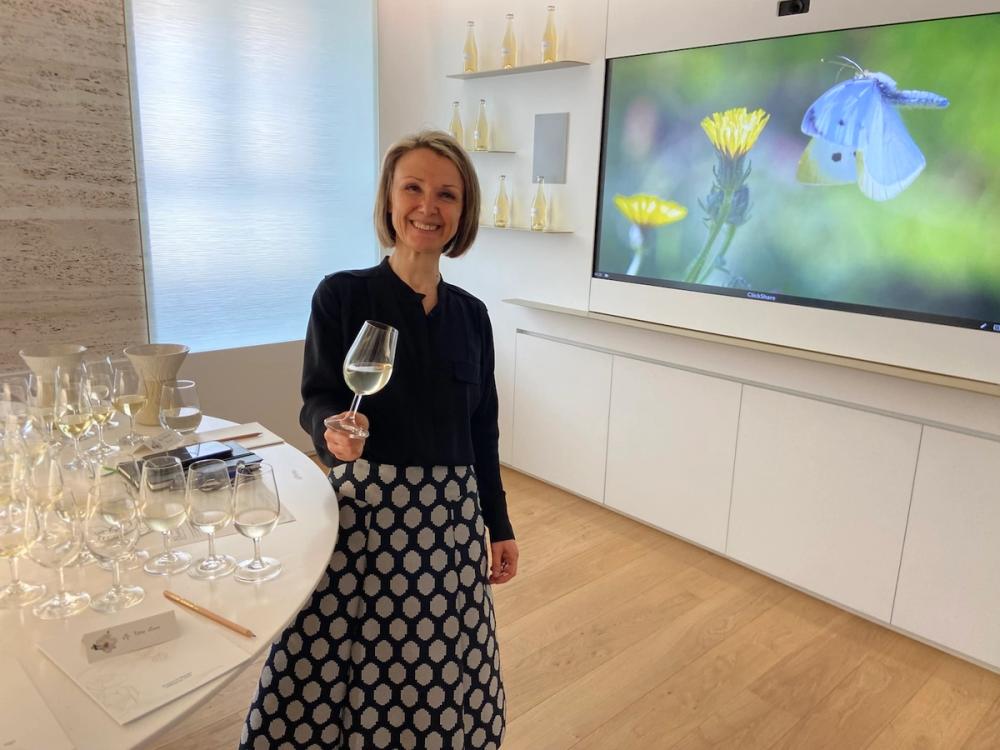
Séverine Frerson, Perrier-Jouët cellar master since 2020
“2024 I believe is set to become a classic year reminding me of the famous vintages of the 1990s,” Frerson explains. “The harvest is a little like 2016”. This is good news because 2024 was a challenging year (very different to hot 2023), with lots of rain and low yields, saved only really by the 10 days of sunshine around harvest time.The 2024 Chardonnay clear wines have graceful tension and refined florality. Frerson confirms the aromatic palette is floral, fresher and more delicate than usual.
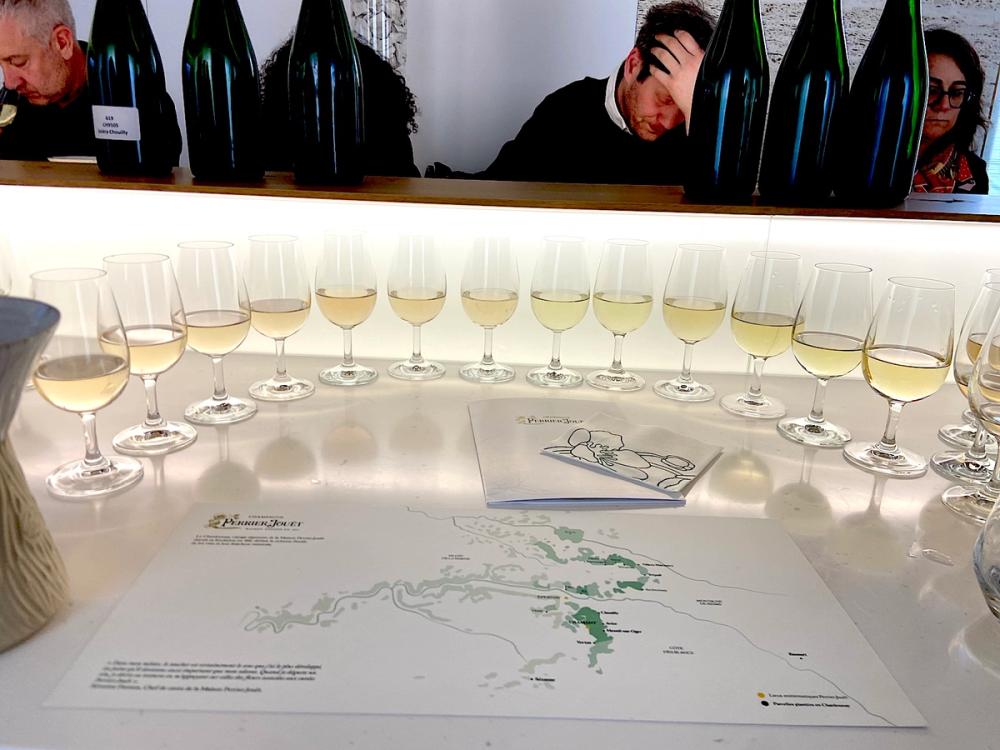
The aromatic palette of the 2024 vins clairs is floral, fresher and more delicate than usual.
The art of blending is to achieve the consistency of the maison’s style, drawn from a selection of base wines from a total available of 500 or sometimes even 600. Vins clairs typically have a high acidity tasting quite sharp (an occupational hazard for the cellar master’s tooth enamel!).
Some have the potential to age well. The trick is to achieve balance between texture, structure and acidity. There may be up to 15 to 20% of reserve wine each year, but none is used in the maison’s prestige Belle Epoque vintage cuvées.
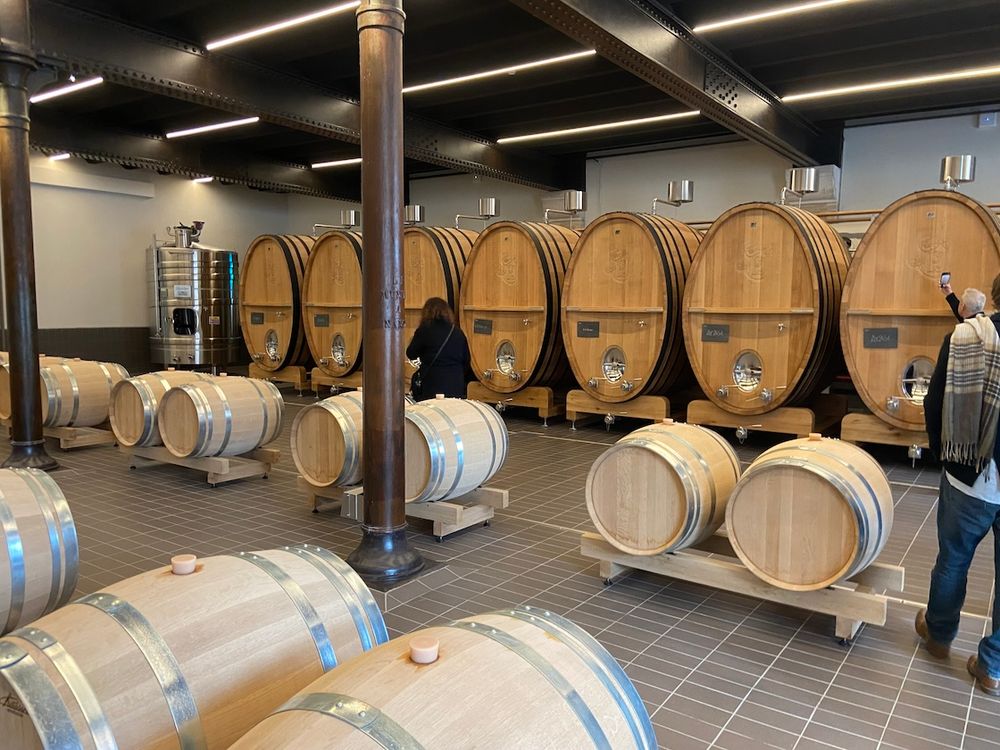
Frerson's new cellar, one wing of which is dedicated to the separate vinification of Chardonnay from regenerative parcels
Frerson has introduced new regenerative vineyard and vinification techniques. She proudly shows her new cellar, opened this year for the 2024 harvest with fine-grained French oak foudres and barrels – an addition to the existing stainless steel vats allowing separate vinification techniques for each area, cru, plot or parcel. Interestingly, we can detect a difference between the base wines that have been stored in the foudres and that in the barrels for 6 to 7 months. They are slightly more rounded, silky with subtle spice.
Another wing of the cellar is dedicated to the separate vinification of Chardonnay from regenerative parcels, allowing Frerson to pursue the precise expression of the terroir. We taste Chardonnay vins clairs from three sites: a control site, a regenerative site planted with floral cover and one with biomass (planted with pulses, legumes and rye).
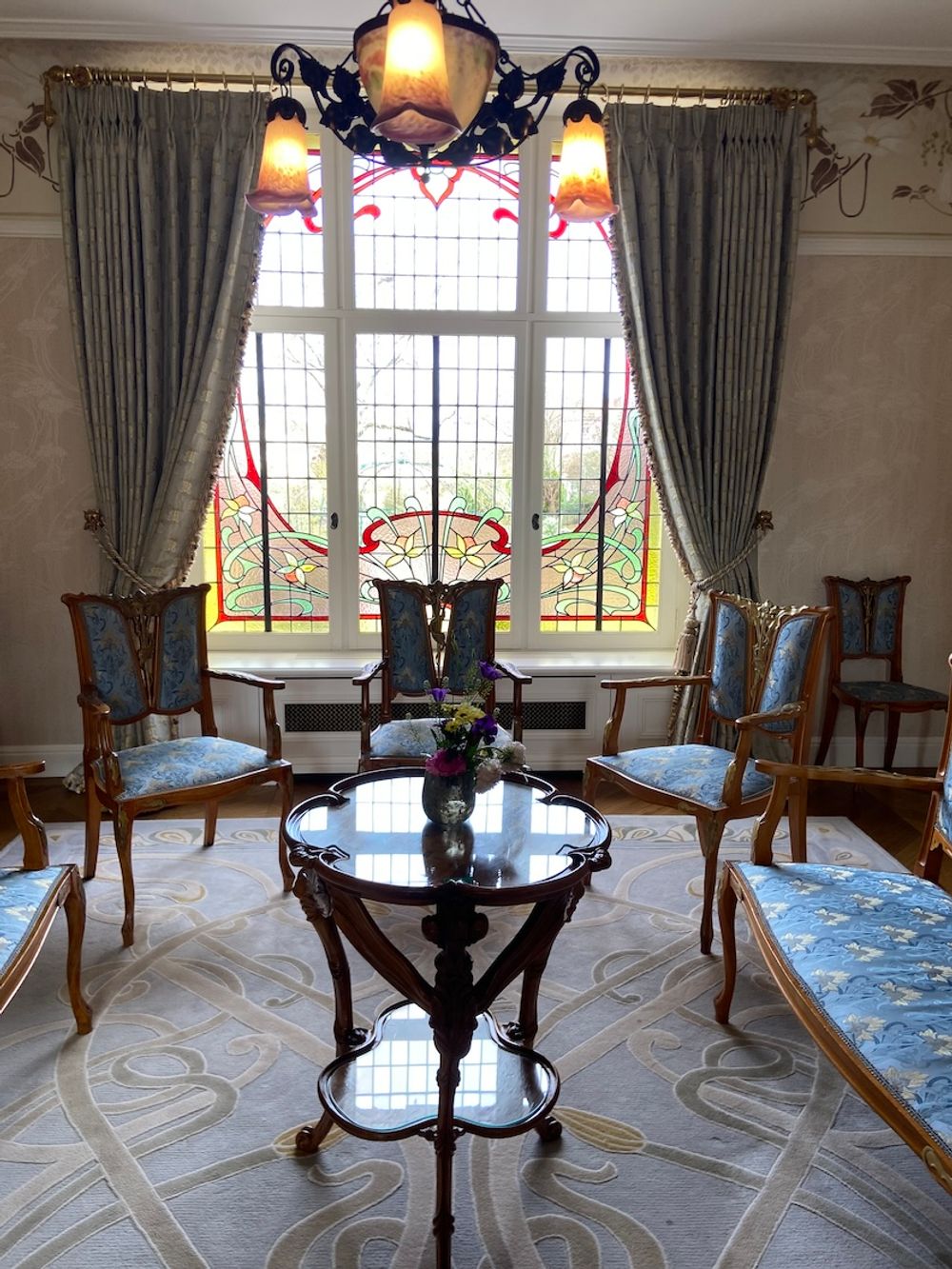
The stunningly beautiful Art Nouveau decorated maison
“Nature is a pillar for the house – so it is a logical step that we should evolve our practices.” Frerson wants all their 66 hectares to be regenerative by 2030 (currently there are only 22). We detected subtle differences in acidity - and soil analysis confirms the benefit of higher nitrogen retention and soil density. Who knows, Frerson hints, “we might even be discovering the potential for a new cuvée”.
In the stunningly beautiful Art Nouveau decorated maison, we were treated to a sumptuous lunch with dishes including beef filet and caviar, and tasted three of Perrier-Jouët’s prestige cuvées: Belle Epoque Blancs de Blancs, Belle Epoque Brut and Belle Epoque Rosé. The lunch was elegantly refined and perfectly reflected the values of the brand.
Mumm’s backbone is Pinot Noir
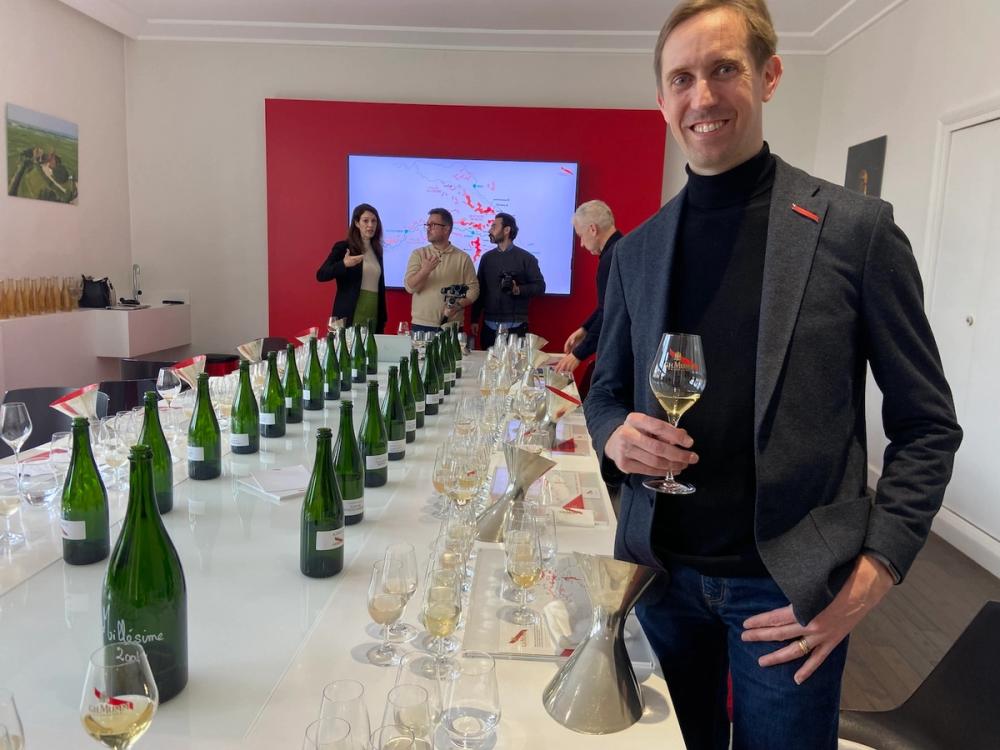
Yann Munier, G.H.Mumm – 2024 is new cellar master’s first harvest
Pinot Noir by contrast is the iconic grape for the Reims Champagne house G.H. Mumm. Yann Munier, Mumm’s new cellar master (he grew up in Champagne and his father sold grapes to the house), joined in April 2023, making last year’s September harvest his first. Producing 6 million bottles annually, nearly 80% of their vineyards are Pinot Noir which gives Mumm its signature structure, freshness and fruitiness.
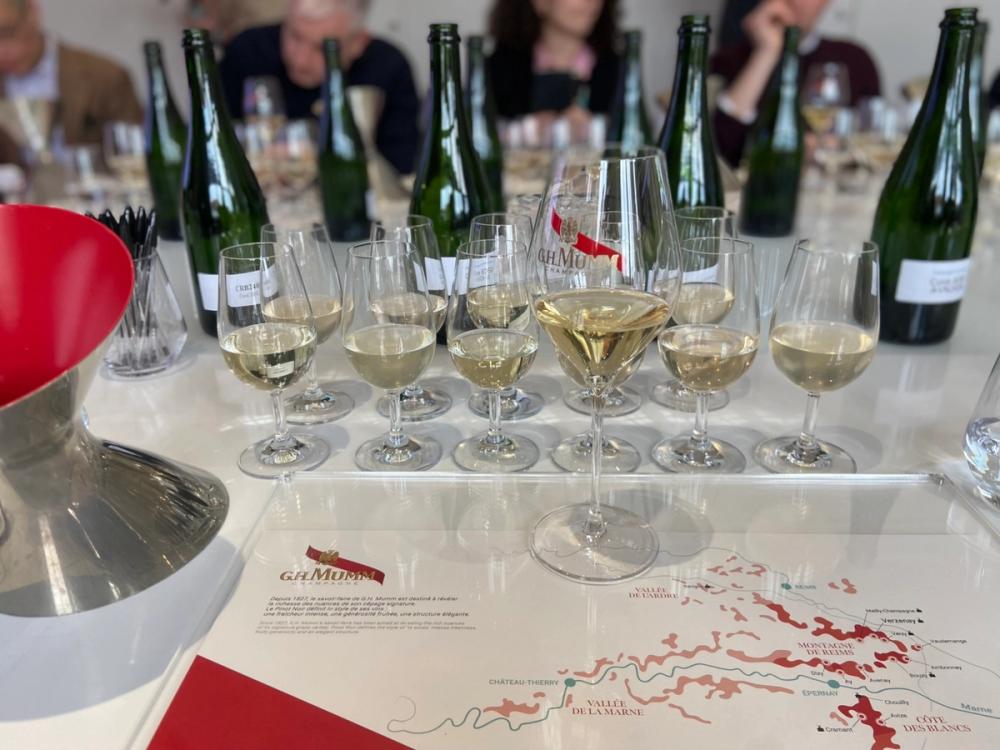
We taste vins clairs from different regions in Champagne – noting differences in acidity, freshness, citrus, salinity and length. “Thrilling and fresh” and “As sharp as we expected a clear wine tasting to be”, were among the comments. “We haven’t been used to seeing such high acidity for a long time,” Munier explains. For their classic cuvée Cordon Rouge, each year, they may use a blend comprising a total of 199 selected vins clairs and reserve wines (40% Pinot Noir, 30% Chardonnay, 30% Pinot Meunier – with 30% from reserve wine).
Mumm has long-standing sustainability credentials (HVE status since 2016) and a zero-herbicide policy since 2020. Regenerative viticulture too is their ambitious aim and they want to support the region to evolve their practices. Soil analysis shows that floral cover doubles the amount of nitrogen in the soil and biomass planting triples it.
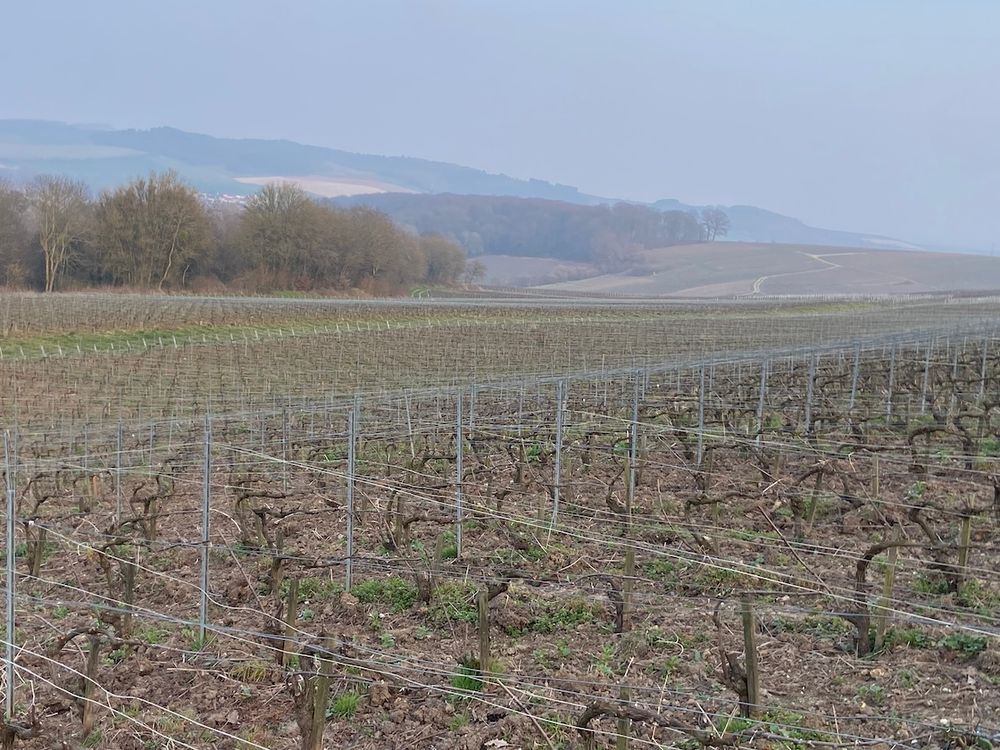
Rolling landscape of vineyards in Champagne near Aÿ
But progress appears somewhat slow as regenerative yields tend to be lower. Only a small proportion of their grape producers are beginning to introduce techniques. Munier however is undeterred: “we will keep our ambitious goal of all production to be regenerative by 2030 – we need to be bold and ambitious, a trail blazer and role model.”
Munier is understandably very excited by his first cuvée in 2024 which shows great potential. Mumm won’t generally produce a vintage Champagne wine for 2024 but will produce one for Verzaney. Its Grand Cru in Verzaney embodies Mumm’s style – powerful, dense with good structure and very long in the finish. Mumm’s RSRV Grand Cru Blancs de Blancs, 4.5 and Rosé Grand Cru cuvées which we tasted over dinner are impressive.
A champagne expert and fellow guest believes Champagne tasting is a bit like listening to an orchestra, and tasting vins clairs is like listening to individual instruments and the contribution they make.Tasting both is vital if you are to truly understand the craft of champagne making.To me the cellar masters are indeed world-class orchestral conductors!
































